Weather: Antarctica/Arctic
The unrelenting cold of the glacial continent of Antarctica boggles the mind. Much of the ice-covered Arctic Ocean melts or breaks up each summer. By contrast, all but roughly two percent of the Antarctic landmass is sealed year-round beneath a mass of ice up to 4.8km/3 miles deep. There's so much ice that, were it […]
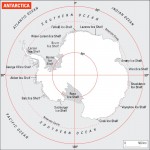
The Antarctic
In the icy world, nothing can compare in size or importance to the Antarctic, which is almost a complete cryo-continent, covering about 14 million square kilometres, about as much as Mexico and the continental US put together. It has been a separate continent in the region of the South Pole for over 50 million years […]
Southeast Asia, Oceania, and Antarctica: Industrialization Sparks Change
A HUMAN PERSPECTIVE Some of the largest employers in Southeast Asia are makers of athletic shoes. They provide much-needed jobs for Southeast Asians, but many observers have accused the companies of abusing workers. For example, in 1995, Lap Nguyen began working at a shoe factory in Vietnam. In February 1996, she was promoted to team leader. […]
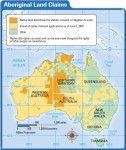
Southeast Asia, Oceania, and Antarctica: Aboriginal Land Claims
A HUMAN PERSPECTIVE In 1972, the Australian government denied the claims of some Aboriginal people trying to regain ancestral lands. In response, Aboriginal protesters erected a tent on the lawn of Old Parliament House in Canberra and named it the Aboriginal Tent Embassy. They called it an embassy to symbolize their treatment as foreigners in […]
Australia, New Zealand, and Antarctica
A HUMAN PERSPECTIVE In 1788, Great Britain founded Sydney, Australia, as a penal colony—that is, a place to send prisoners. By the end of the 20th century, Sydney had overcome its origins and earned a reputation as a fun and fascinating international city. That has been due, in part, to a unique combination of physical […]
Southeast Asia, Oceania, and Antarctica: Human–Environment Interaction
A HUMAN PERSPECTIVE In May 2000, the Smithsonian Institution honored Mau Piailug for preserving traditional navigation skills. Mau was born in Micronesia. When he was four years old, he began to sail with his grandfather, who taught the boy how to navigate without using instruments. Those methods of navigation were similar to those used by […]

Southeast Asia, Oceania, and Antarctica: Climate and Vegetation
A HUMAN PERSPECTIVE During the Vietnam War, American troops were sent to fight in unfamiliar Southeast Asia. Among the hardships they endured was the tropical climate. Few had ever lived in a place that had a monsoon season with constant rain. One soldier wrote to his wife, “We live in mud and rain. I'm so […]
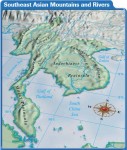
Southeast Asia, Oceania, and Antarctica: Landforms and Resources
A HUMAN PERSPECTIVE The Aeta people of the Philippines lived on the volcano Mount Pinatubo for generations. They knew this volcano so well that they timed the planting and harvesting of their crops by the amount of steam rising from a vent on its slope. In 1991, the Aeta noticed changes in the mountain and […]
Antarctica: Conclusion
Today, the prime purpose of the ATS is no longer the containment of the East–West confrontation of the Cold War. Technological developments and steadily expanding economic/commercial interests imply that certain actors are looking to realize economic benefits from the region. So long as human activity in the Antarctic was of a limited scale, science oriented, and perhaps largely under the direct control […]
Imagining Antarctica as a World Park: Regulating Tourism
Managing tourism in extremely scenic but ecologically sensitive Antarctic, whose chief export remains scientific data, has emerged in recent years as one of the key questions facing the ATS, characterized by steep annual increases, diversification, and geographical expansion. The increasing number of tourists visiting specific or select, more accessible, and logistically considered as safe areas on the continent or its surrounding islands […]
Antarctica as a ‘Natural Reserve’ Devoted to Peace and Science: Since the 1990s
Since the 1990s, the Antarctic has increasingly been represented in global ecological terms. The growing body of evidence purporting to link the polar continent to possible global climatic change has been used by scientists and scientific organizations to explain and legitimize their endeavors. Antarctic is being increasingly seen not only as a barometer of global environmental and resource debates but […]
‘Question of Antarctica’ in the United Nations: The Rise and Decline of Alternative Visualization of the Antarctic
The interest of the 'outsiders' in the icy continent arose as early as early 1980s and somewhat in direct proportion to the origins and evolution of minerals issue within the ATS. Malaysia was to emerge as the most vociferous and dissatisfied among the critics of the ATS. The Malaysian position reflected, in part or whole, that of the most of […]
Antarctica as a Continent of Science and Peace: 1950s and 1960s
The Antarctic Treaty (cited hereafter as the Treaty), with a preamble and 14 articles, was signed on 1 December 1959 by the representatives of the 12 IGY participating countries – Argentina, Australia, Belgium, Chile, France, Japan, New Zealand, Norway, South Africa, United Kingdom, United States of America, and USSR. It took effect on 23 June 1961. The preamble to the Treaty underlines […]
IGY (1957–58) and the Discursive Transformation of the Antarctic
It was science, especially the IGY held during 1957–58, which transformed Antarctic politics and laid down the groundwork for the Antarctic Treaty of 1959. More than 40 research stations and observatories were established during this period, and thousands of scientists were located on the continent. There was more or less a tacit agreement among the participating countries that political problems regarding the […]
Antarctica in the Cold War Ideological Geopolitics (1950s and 1960s)
The dominant spatial representations of the Antarctic during the 1950s were affected by the Cold War discourses. Earlier on, there were clashes between Britain and Argentina over the issue of territorial ownership. By late 1947, Antarctic affairs assumed immense significance in foreign policy considerations of the US, and the impetus for this shift in focus had more to do […]
Antarctica
With a total area of about 5.5 million square miles (or some 14 million km2) constituting one tenth of the world's land surface, Antarctica is far larger than India and China put together. Right through the nineteenth century and up to World War II, human presence and activity in the Antarctic was rather patchy, both spatially and temporally. Thereafter, and particularly […]
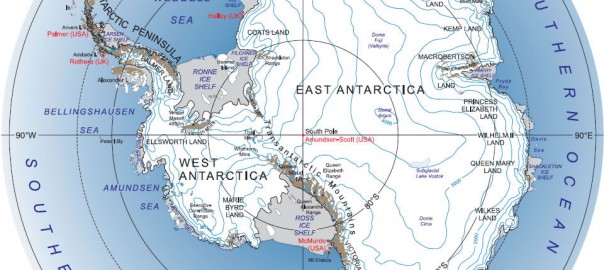
Antarctica
THE WORLD'S fifth-largest continent, Antarctica is home to the South Pole. This continent of almost 98 percent ice and 2 percent barren rock holds the distinction of being the coldest, windiest, driest, and highest continent. Antarctica covers some 5.4 million square mi (14 million square km), and has no indigenous people, but seasonal staff from […]
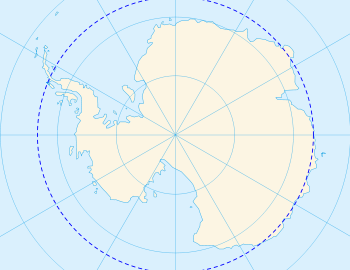
Antarctic Circle
THE ANTARCTIC CIRCLE is an imaginary line located at 66.5 degrees south latitude or 23.5 degrees northward of the South Pole. It marks the southernmost location where the sun can be seen on June 22 (the Southern Hemisphere's winter solstice) and the northernmost location where the midnight sun is visible on December 21 (the Southern Hemisphere's […]